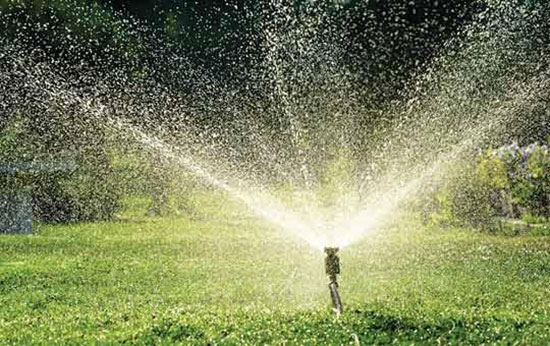
It was volunteering in her children’s Montessori school garden that gave rise to her new series Wild Tales & Garden Thrills, stories bursting with the real-life experiences of young gardeners. Children see the world from a totally different perspective than adults and Venetta knows their adventures will surely inspire a new generation to get outside,
and get digging.
We’ve all heard that water is crucial to our health, not to mention the health of the planet. But what are the best ways to conserve water in a home garden—ones that will actually make a difference? I mean, we can live without flowers and grass, but our fruits and vegetables need water to thrive (so that we may survive)!
Water Conservation Methods
Drip irrigation systems, compost, and mulch are the first line of defense in the garden when it comes to water conservation. Drip irrigation focu
ses water where it’s needed—a plant’s root system—so it won’t be lost to evaporation. Compost retains water while mulch assists in keeping it moist by preventing the sun rays from penetrating.
Compost can be created at home by combining old leaves and kitchen scraps. Mulch can be composed of pine bark or straw, black and white newspaper or cardboard, hay, or old leaves. You can also buy weed mats that provide the same benefits.
Know When to Water

Watering only when your plants need water and not according to a regular schedule plays an important role in conservation. In fact, not only does it save on water, but watering deeply and less often helps your plants develop stronger root systems. Another way to save is by watering in the early morning hours as opposed to middle of the day. This way, your plants can soak up every drop of water without competing with wind and sunlight. Morning is preferred over evening to limit the development of fungal diseases.
Make a Rain Barrel to Save Water
Rain barrels are another great way to conserve water and they’re super easy to make—especially if you have downspouts on your home from a gutter. First, you’ll need to find your barrel. You can purchase an empty barrel or make one from a plastic trash can. Next, you’ll need a spigot and a drill. The rest is simple. Drill a hole at the base of your barrel; size will depend on your spigot. Insert spigot. If the seal around your spigot isn’t extremely tight, you can use heavy-duty waterproof tape to seal it in the barrel.
If using a downspout from your home, place the barrel beneath the downspout so that water will dump directly into your barrel. If it’s an open trash can, this step is the last! If your barrel has a lid, you’ll need to drill holes in the surface area so that rain can penetrate the barrel. That’s it!
Tip: Place your barrel on an elevated surface so that you have ample room to collect your rainwater from the spigot.

